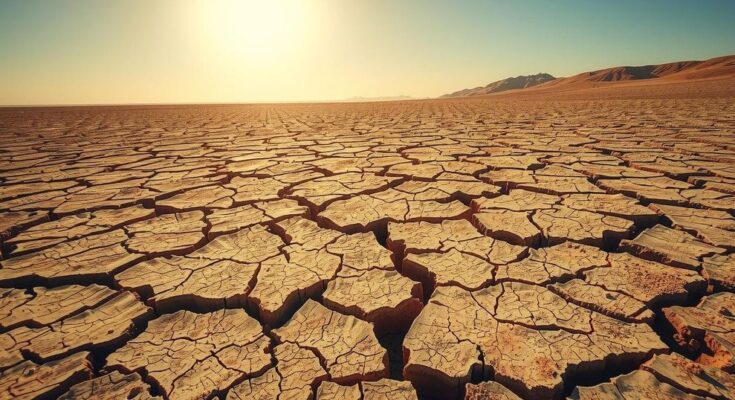A study reveals that climate change has significantly increased the likelihood and severity of the ongoing heatwave in South Sudan, affecting primarily women and girls. The nation struggles with political instability and limited resources, further complicating adaptation efforts. With heat exceeding 40 degrees Celsius becoming more frequent, the challenges faced by the population are profound and urgent.
A recent study indicates that human-induced climate change has heightened the likelihood of an ongoing heatwave in South Sudan, significantly affecting women and girls. Since gaining independence in 2011, South Sudan has faced considerable insecurity and environmental challenges, rendering it ill-prepared for natural disasters.
The nation is currently grappling with political instability, raising concerns about the potential unraveling of a peace agreement made in 2018 that ended a lengthy civil conflict. The recent heatwave has resulted in temperatures reaching 40 degrees Celsius (104 Fahrenheit) in some areas, prompting officials to shutter schools in the capital due to health concerns, with reports of students collapsing in the sweltering heat.
According to the World Weather Attribution study, climate change has intensified the extreme heat by at least 2 degrees Celsius and increased its likelihood by tenfold. Kiswendsida Guigma, a climate scientist, stated that this situation exacerbates existing economic and social challenges in South Sudan.
The study highlights the struggles of outdoor workers who largely have no access to air conditioning and live in homes with tin roofs. These conditions make it difficult to adhere to government advice to remain indoors. Furthermore, essential resources like drinking water are scarce, with a mere 8.4 percent of the population having access to electricity as of 2022.
Women and girls are particularly affected as they bear the responsibility for tasks such as water collection, cooking, and other household duties. A local woman, Elizabeth Lodou Lochapio, acknowledged the burdens facing women under these conditions. Others report abiding by the heat by remaining stationary during the hottest hours of the day.
The study’s authors, including Sarah Kew from the Netherlands Meteorological Institute, assert that heatwaves exceeding 40 degrees are becoming commonplace, occurring every two years and presenting extraordinary challenges for South Sudanese citizens. Projections indicate that this heatwave is likely to continue throughout March.
In summary, the escalating heatwave in South Sudan is attributed to climate change, which has made such extreme temperatures both more likely and more severe. The ongoing political turmoil, coupled with inadequate infrastructure, exacerbates the challenges faced, particularly by women and girls, who bear a disproportionate burden. As these heatwaves become recurrent, it is imperative to address the socio-economic impacts and the urgent need for environmental adaptation measures.
Original Source: www.france24.com




